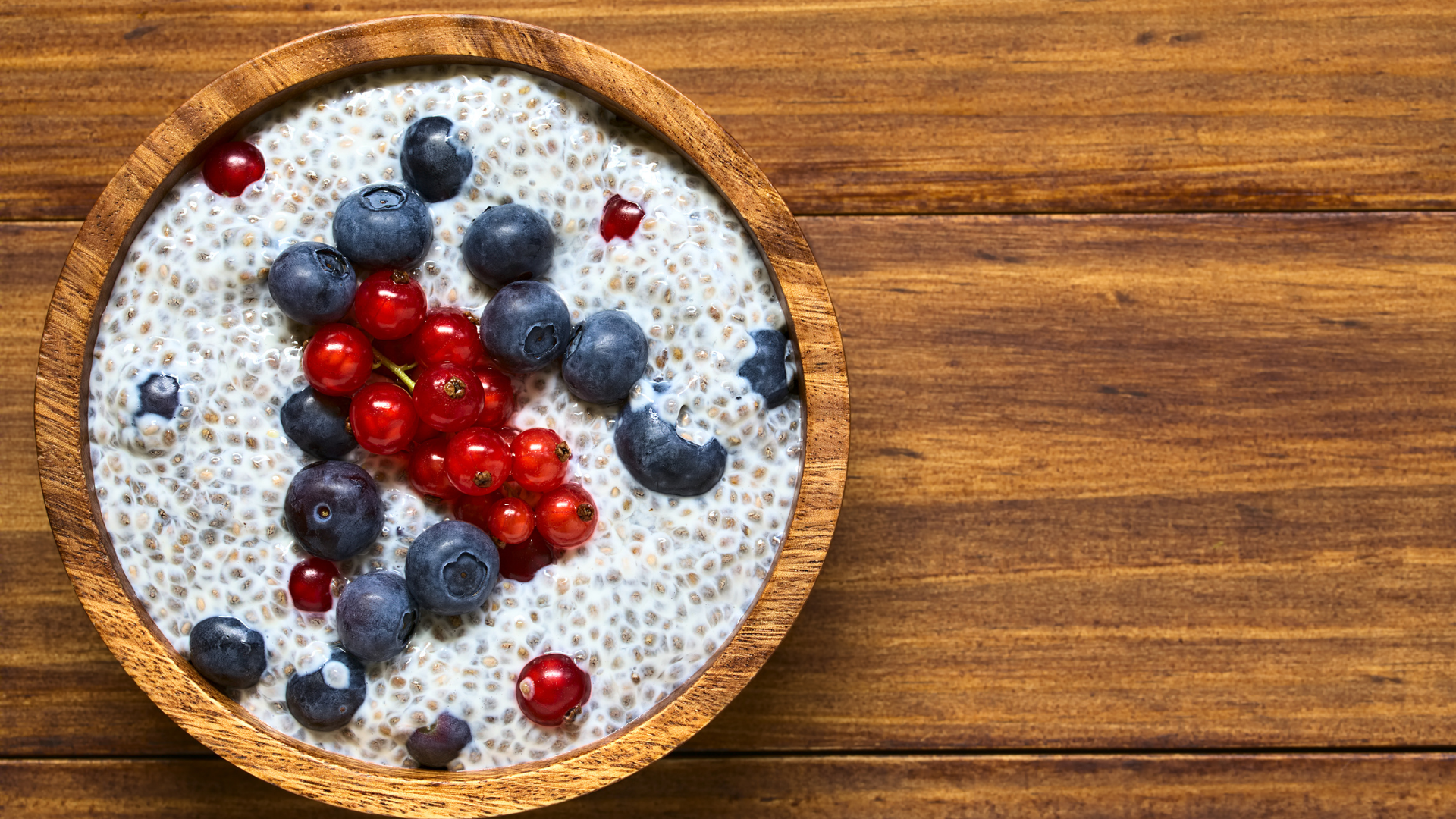Dark Chocolate Linked to Reduced Type 2 Diabetes Risk
Using data from three prospective cohort studies, researchers explored how different types of chocolate consumption relate to the risk of developing Type 2 diabetes. The study focused on dark chocolate, milk chocolate and overall chocolate intake to determine their respective impacts on Type 2 diabetes risk and weight management.
The study included a vast group of 192,208 participants from the Nurses’ Health Study, Nurses’ Health Study II and Health Professionals Follow-Up Study. Importantly, none of these individuals had Type 2 diabetes, cardiovascular disease or cancer at the start of the research, ensuring that the findings specifically addressed the effects of chocolate consumption on those without pre-existing conditions.
Findings revealed that consuming dark chocolate was associated with a significant reduction in the risk of developing Type 2 diabetes. Participants who enjoyed five or more servings of dark chocolate each week experienced a 21% lower risk of Type 2 diabetes compared to those who consumed less. Additionally, for every serving of dark chocolate consumed weekly, there was a 3% decrease in Type 2 diabetes risk, highlighting a consistent protective effect.
In contrast, milk chocolate did not show a similar benefit. The study found no significant link between milk chocolate intake and the risk of developing Type 2 diabetes. Moreover, regular consumption of milk chocolate was associated with weight gain over time, suggesting that while dark chocolate may offer health benefits, milk chocolate could contribute to unfavorable weight changes.
The mechanisms behind dark chocolate’s protective effects are rooted in its rich cocoa content, particularly the presence of flavan-3-ols like epicatechin. These compounds enhance insulin sensitivity, allowing your body to manage blood sugar levels more effectively and thereby reducing the risk of insulin resistance.
Interestingly, the study also noted that the benefits of dark chocolate consumption were more pronounced among younger individuals. This suggests that incorporating dark chocolate into the diet early on may offer more substantial protective effects against Type 2 diabetes. Furthermore, those who consumed dark chocolate tended to also eat other flavan-3-ol-rich foods and beverages, indicating that dark chocolate is often part of a broader, health-conscious dietary pattern.
Cocoa Polyphenols Show Mixed Results in Weight Management Studies
A scoping review explored the effects of cocoa polyphenols and dark chocolate on obesity, aiming to determine their role in weight management. This comprehensive review analyzed numerous research papers, highlighting the varied outcomes of cocoa consumption on obesity-related factors.
The study focused on adults struggling with obesity, including those with additional health issues like heart disease and Type 2 diabetes. Researchers aimed to uncover whether the compounds found in cocoa could help manage weight and reduce inflammation in these individuals.
While some research indicated that cocoa polyphenols could aid in weight management by boosting metabolism and reducing fat accumulation, other studies did not observe significant changes. This disparity suggests that the impact of cocoa on obesity depends on various factors, including the type of cocoa product consumed and the dosage used.
Cocoa polyphenols, particularly flavanols like epicatechin and catechin, are known for their antioxidant and anti-inflammatory properties. These compounds are believed to enhance energy expenditure, which means your body burns more calories even at rest.
Additionally, they may promote thermogenesis, a process where your body generates heat by burning calories, further supporting weight loss. However, the effectiveness of these mechanisms varies based on individual metabolism and the specific cocoa product consumed.
The study also revealed variability in outcomes depending on the form and amount of cocoa consumed. Different cocoa products, such as dark chocolate, cocoa powder and supplements, contain varying levels of polyphenols.
For instance, dark chocolate typically has a higher polyphenol content compared to milk chocolate, making it more effective in influencing weight-related factors. Moreover, the dosage of cocoa polyphenols plays a key role; higher doses may lead to more significant benefits, but the optimal amount still requires further investigation.
The review also emphasized the need for more research to fully understand how cocoa polyphenols contribute to weight control. While preliminary findings are promising, the exact pathways through which these compounds affect body weight and metabolism remain unclear. Future studies should aim to identify the most effective types and doses of cocoa polyphenols, as well as their long-term impact on obesity and related health conditions.
Benefits of Polyphenols in Dark Chocolate
Polyphenols in dark chocolate were linked to improved metabolic profiles, which include better blood sugar levels, reduced insulin resistance and optimized cholesterol levels. These improvements are particularly beneficial for individuals with obesity, as they are at a higher risk of developing metabolic disorders like diabetes and heart disease.
By enhancing insulin sensitivity, cocoa polyphenols help your body utilize glucose more efficiently, preventing spikes in blood sugar levels that can lead to fat storage.
The study also pointed out that most existing research has focused on obese individuals with other health conditions. There is a significant gap in understanding how cocoa polyphenols affect healthy obese individuals who do not have comorbidities. Studying this group could provide more insights into the standalone effects of cocoa on weight management and overall health, free from the influence of other diseases.
Furthermore, the benefits of cocoa polyphenols extend beyond weight management. These compounds play a role in preventing chronic diseases by reducing oxidative stress and inflammation, which are common underlying factors in many health conditions. By protecting cells from damage and improving vascular function, cocoa polyphenols contribute to better long-term health outcomes.
Despite the promising findings, the study highlighted several limitations in the current research. Many studies have small sample sizes or short intervention periods, making it difficult to draw definitive conclusions. Additionally, the lack of standardization in cocoa product types and polyphenol dosages across studies adds to the inconsistency of results.
Polyphenol-Rich Dark Chocolate’s Impact on Health Markers
Research published in the British Journal of Nutrition also investigated how dark chocolate rich in polyphenols affects important health indicators like blood sugar and blood pressure. The researchers wanted to see if consuming different amounts of these beneficial compounds make a difference in managing these health markers, especially in individuals who are overweight or obese.
The study included healthy, non-smoking adults between the ages of 19 and 50, all with a body mass index (BMI) of 25 or higher, indicating they were overweight or obese. Over the course of the research, participants consumed dark chocolate containing either 500 milligrams or 1,000 milligrams of polyphenols daily. The goal was to observe any changes in their fasting blood glucose levels, total cholesterol and blood pressure after two weeks of this diet.
Findings revealed that both the 500 mg and 1000 mg polyphenol doses were effective in reducing fasting blood glucose and lowering both systolic and diastolic blood pressure. This means that the lower dose of polyphenols in dark chocolate was just as beneficial as the higher dose in terms of these specific health improvements.
The rate of improvement was notably swift, with significant reductions in blood glucose and blood pressure observed after just two weeks of including dark chocolate in the participants’ diets. This quick response highlights the potential of dark chocolate as a dietary intervention for improving metabolic health markers in a relatively short period.
After two weeks of the polyphenol-rich dark chocolate diet, no significant alterations were observed in total cholesterol levels or in the participants’ body measurements, such as weight or body fat percentage. In terms of biological mechanisms, the study suggests that the improvements in blood glucose and blood pressure are largely due to enhanced vascular function.
Furthermore, the study points out a possible saturation effect with polyphenol doses. This means that once a certain amount of polyphenols is consumed, taking more does not necessarily lead to greater health benefits.
Overall, the study highlights the significant role of polyphenol-rich dark chocolate in supporting metabolic health. By improving blood glucose and blood pressure levels, dark chocolate is a valuable addition to the diets of overweight and obese individuals looking to reduce their risk of developing Type 2 diabetes and cardiovascular diseases.
However, as with any dietary change, it’s important to consume dark chocolate as part of a balanced diet to achieve the best health outcomes.
Four Key Steps to Harness Dark Chocolate’s Benefits and Improve Diabetes
Research now confirms that dark chocolate, when consumed properly, helps reduce the risk of Type 2 diabetes and improves insulin sensitivity. The key lies in understanding how to maximize its benefits while avoiding common pitfalls that could negate its positive effects.
1.Choose high-quality dark chocolate with at least 70% cacao and safe ingredients — Select dark chocolate rich in flavanols by opting for varieties with a minimum of 70% cacao. Ensure the chocolate is free from harmful substances such as cadmium and lead by choosing high-quality toxin-free brands.
Avoid products containing vegetable oils and opt for brands that prioritize ingredient transparency and rigorous testing for heavy metals. Also look for brands that don’t contain soy lecithin, high-fructose corn syrup or artificial flavors.
2.Incorporate dark chocolate into a carb-rich diet strategically — Integrate dark chocolate into a diet that includes 200 to 350 grams of targeted carbohydrates daily, adjusted based on individual microbiome needs and activity levels.
3.Engage in regular physical activity and reduce LA — Eating dark chocolate is only part of a holistic approach to Type 2 diabetes. Regular physical activity is also important. Engage in activities like daily walking or other forms of exercise to improve insulin sensitivity and support blood vessel function, along with maintaining healthy blood pressure levels and overall metabolic health.
Reducing your intake of LA in seed oils is also key to diabetes management. When you consume high levels of LA, your body produces more proinflammatory eicosanoids, which trigger chronic low-grade inflammation. This persistent inflammatory state interferes with insulin signaling pathways, making your cells less responsive to insulin’s effects.
As a result, your body needs to produce more insulin to achieve the same glucose-lowering effect, leading to hyperinsulinemia. Over time, this compensatory mechanism exhausts your pancreatic beta-cells, reducing insulin production and exacerbating insulin resistance. Moreover, inflammatory markers like C-reactive protein and interleukin-6, which are elevated with increased LA intake, have been linked to higher risks of developing Type 2 diabetes.
By fostering an inflammatory environment, excessive LA consumption not only disrupts your metabolic balance but also accelerates the progression toward diabetes. The primary reason why excess LA is harmful to your health is because it disrupts your cellular powerhouses — the mitochondria — disrupting cellular energy. Without energy, your cells can't repair and regenerate themselves, leading to chronic disease.
4.Monitor your metabolic health and adjust accordingly — Recognizing insulin resistance early is essential, as it’s a warning sign for your metabolic health — one that often precedes Type 2 diabetes. The HOMA-IR (Homeostatic Model Assessment of Insulin Resistance) is a valuable diagnostic tool that helps assess insulin resistance through a simple blood test. The HOMA-IR formula is as follows:
HOMA-IR = (Fasting Glucose x Fasting Insulin) / 405, where
- Fasting glucose is measured in mg/dL
- Fasting insulin is measured in μIU/mL (microinternational units per milliliter), and
- 405 is a constant that normalizes the values
If you’re using mmol/L for glucose instead of mg/dL, the formula changes slightly:
HOMA-IR = (Fasting Glucose x Fasting Insulin) / 22.5, where
- Fasting glucose is measured in mmol/L
- Fasting insulin is measured in μIU/mL, and
- 22.5 is the normalizing factor for this unit of measurement
Anything below 1.0 is considered a healthy HOMA-IR score. If you’re above that, you’re considered insulin resistant. The higher your values, the greater your insulin resistance. Conversely the lower your HOMA-IR score, the less insulin resistance you have, assuming you are not a Type 1 diabetic who makes no insulin.

















